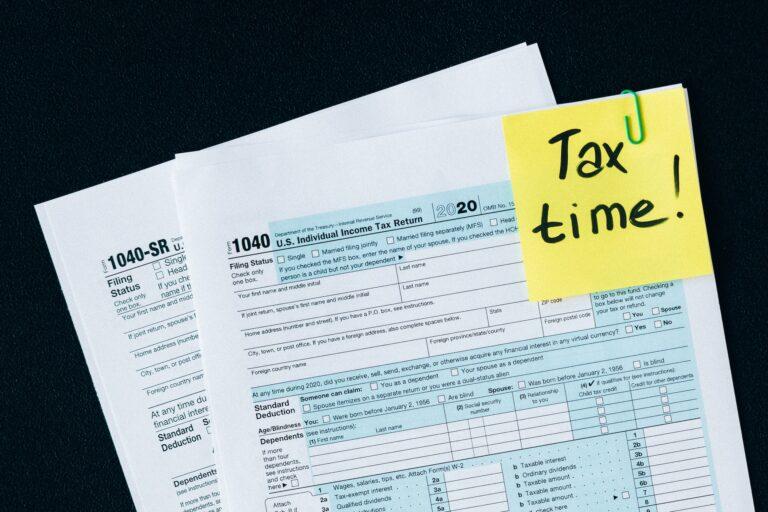As an entrepreneur, you may temporarily need extra financial space to keep your business activities running or to expand. An option for this is a current account credit, but what exactly does this mean and how does it work? We take a closer look at the concept of overdraft credit and discuss the advantages and disadvantages of this financing option.
What is a current account credit?
When is overdrafting interesting?
Overdrafting can be interesting when the company needs temporary extra financial space. For example, if there are unexpected costs or if there is a period in which there are less revenues than usual. Overdrafting can be a solution in such cases because it is quickly and easily available and there is no hassle applying for a loan.
Especially companies that have to deal with large fluctuations in their financing needs often use a current account credit. There are numerous situations in which overdrafting can be interesting. We provide some examples below:
1. Pre-financing of projects: Companies that deal with projects that require a lot of pre-financing, such as building a house or developing a new product, can benefit from a current account credit. The company can then borrow the necessary money to start the project and repay the credit later from the project's revenues.
2. Overbrugging van openstaande facturen: Companies that deal with projects that require a lot of pre-financing, such as building a house or developing a new product, can benefit from a current account credit. The company can then borrow the necessary money to start the project and repay the credit later from the project's revenues.
3. Hiring personnel: Hiring personnel can entail high costs, such as salaries and social contributions before the new hire starts to generate turnover. By using a current account credit, these costs can be paid until the company has enough turnover to pay the costs from the revenues.
4. Seasonal industry: Companies that deal with seasonal work or sell seasonal items, such as a travel agency or an ice cream parlor, often have highs and lows in their turnover. A current account credit can then help to cover the costs during the quieter periods and repay the credit later from the revenues of the busy periods.
5. Inventory purchase: Companies that have to purchase inventory for sale, such as a wholesaler or a supermarket, often face high costs that have to be paid in advance. By using a current account credit, these companies can purchase the inventory on time.
6. Business investment: If a company wants to make a large investment, for example in new machines or equipment, a current account credit can be a solution. The company can then make the necessary investment and repay the credit later from the revenues of the investment.
How does it work?
A current account credit works as follows: the bank makes a certain credit limit available to the company. This is the maximum amount that can be withdrawn. The withdrawn amount is then settled with the current account. You only pay interest on the withdrawn amount, not on the total credit limit. An application for a current account credit is assessed in the same way as an application for a loan. It is important that you meet a number of conditions.
When applying for a current account credit, the bank will assess the company on the following:
- Current financial statements of the company: his provides the bank with insight into the financial position of the company and its financial standing.
- Business plan for starting entrepreneurs: For starting entrepreneurs, it is important to have a well-founded business plan in order to assess the feasibility of the enterprise. (Although these days it it very difficult for starting companies to get a credit from the bank).
- Business plan and the purpose of the credit: This makes clear what the credit will be used for and whether the business plan is feasible.
- The amount of the desired credit: This determines the maximum credit limit that the bank is willing to provide.
- No negative BKR registration: If there is a negative BKR registration, this can lead to rejection of the application.
- Any existing loans and compliance with payment obligations: This gives the bank insight into the financial obligations of the company and the extent to which they are being met.
Banks always ask for collateral
When taking out a current account credit, the bank often requires additional securities or a personal guarantee to reduce the risk of default. These can take different forms of security, such as:
1. Pledge on stocks or other company assets: The bank then has the right to sell these goods if the business is unable to meet its payment obligations.
2. Guarantee: In this case, a third party guarantees the loan. This could be another company or a personal guarantee by the owner of the business.
3. Hypotheekrecht: If the company has a property or business premises, this can serve as collateral for the credit.
The choice of a particular form of security depends on the specific situation of the company and the preferences of the bank. It is important to carefully consider the securities being asked and the consequences if payment obligations cannot be met.
The costs
Using a current account credit incurs not only interest costs but also other costs such as commissions and administration fees charged by the bank. Because the flexibility of a current account credit entails higher risks for the bank (no fixed repayments), the interest rate is usually higher than for other types of loans. It is therefore important to carefully consider these costs and weigh them against the benefits of the current account credit.
When taking out a current account credit, the interest rate is determined based on the financial health of the company and the securities it can offer. The interest rate can therefore vary. This means that each company has an individual interest rate depending on its financial situation. If the company is in good financial health, it can expect a lower interest rate. However, in times of financial difficulties, the interest rate may be higher. It is therefore important to take these costs into account and carefully determine whether the current account credit is the right option for the financial needs of the company.
The benefits of a current account credit
Current account credit has some advantages that can make it an attractive option for companies that need extra financing quickly:
1. Flexibility: Current account credit is a flexible form of financing. You can borrow money when you need it and repay it when the money is available again.
2. Speed: The process of applying for a current account credit is relatively simple and can be quick. This allows you to quickly have access to extra financial space when you need it.
3. Accessibility: Unlike traditional bank loans, the requirements for overdraft credit are usually less strict. This makes it easier for companies to obtain this form of financing.
The disadvantages of current account credit:
However, there are also some disadvantages associated with current account credit:
1. Costs: Overdraft can be more expensive than other forms of financing, such as a term loan. Banks often charge high interest rates and fees for the use of this financing form.
2. Risks: Current account credit carries certain risks. For example, you may face higher interest rates, repayments that endanger your cash flow, or even the loss of your assets if you cannot meet the repayment obligations.
3. Dependency: The use of this type of credit can make you dependent on your bank. If your bank decides to change the terms of your credit or terminate the credit line (which they can on short notice with a current account credit), this can have consequences for your business.
The solution for credit without borrowing by Boozt24!
However, there are alternatives to credit lines where you do not have to take out a loan or require a BKR registration , If you are looking for a fast form of financing without asking for collateral or other securities apart from your invoices, consider factoring with Boozt24. Factoring is a flexible form of financing where you can convert your invoice into cash within 24 hours. Read more about factoring and our method.



